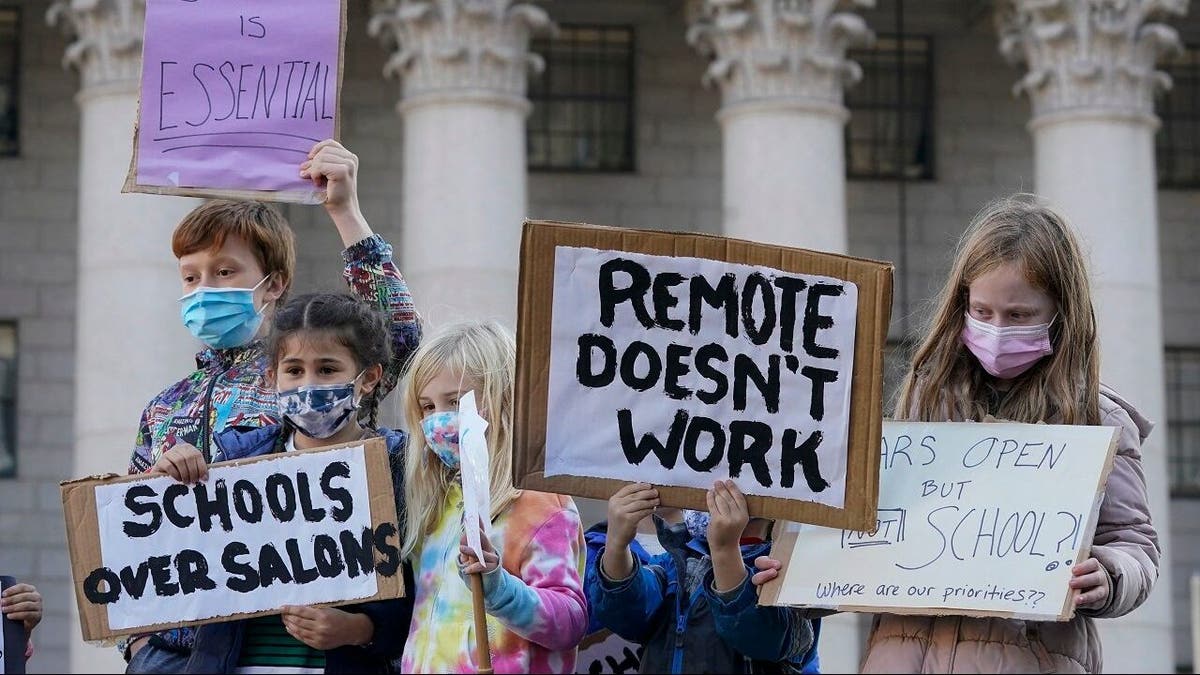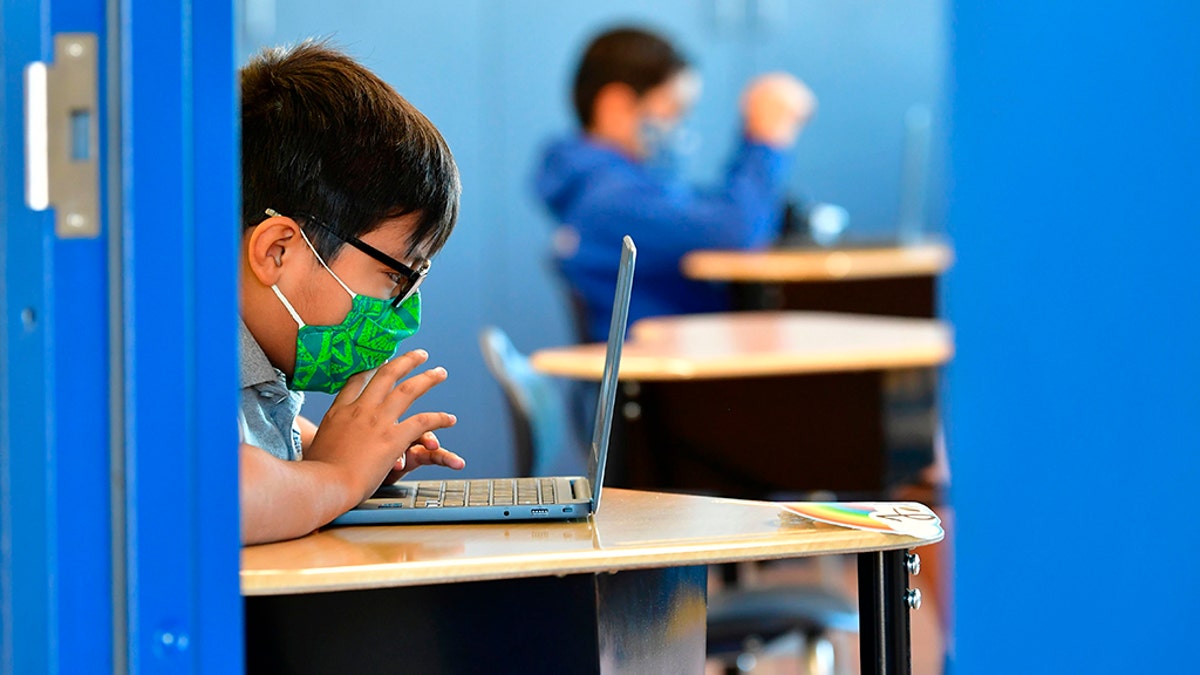10 states, DC have closed all schools due to coronavirus pandemic
Partnership Schools Superintendent Kathleen Porter-Magee weighs in on ‘Fox & Friends Weekend.’
As coronavirus cases spike across the U.S., local and state officials are implementing new lockdown restrictions, including those on schools.
Some schools in states from Connecticut to California that switched from virtual learning in the spring to in-person or hybrid learning by autumn are moving back to online classes as cases spike, and it’s taking a toll on students, parents and teachers.
A new study from Fairfax County, Va., Public Schools Office of Research and Strategic Improvement suggests middle and high school students are seeing less academic success as a result of online learning. The county's schools remain closed, and parents protested calls to keep learning virtual during a Nov. 12 demonstration, according to WJLA.
The percentage of students with two or more F marks, for example, increased 83% from 6% to 11% in the first quarter of the 2020-2021 school year compared to the first quarter of the 2019-2020 school year.
DE BLASIO TO REOPEN NYC SCHOOLS, SAYS HE HEARD PARENTS 'LOUD AND CLEAR'
Students with disabilities and non-English speakers experienced the largest increase in F marks.
“Students at the middle school level had a notable increase in the percentage of failures, while at the high school level the increase also existed but was considerably smaller,” the study reads. “...The trend of more failing marks is concerning across the board but is especially concerning for the groups that showed the biggest unpredicted increases in receiving multiple unsatisfactory marks, namely our English learner students and students with disabilities.”
ADRIANA COHEN: GIVE TEACHERS PRIORITY FOR COVID-19 VACCINATIONS SO SCHOOLS CAN REOPEN
Similar research conducted in California and Texas also found that students were failing more frequently as a result of virtual learning.
A return to virtual learning will also be hard on working parents who have been forced to change schedules and seek help looking after their children as they learn from remote locations. Parents have organized protests to keep schools open in Pennsylvania, Oklahoma, New Jersey, Arizona and other states.

Students demonstrate during a rally to call on New York Mayor Bill de Blasio to keep schools open, Saturday, Nov. 14, 2020, in New York. (AP Photo/Mary Altaffer)
While educators and school staff may be at a substantially greater risk of contracting COVID-19 in schools, students – especially those in elementary school – do not appear to be virus superspreaders, according to new research.
“I didn’t know it was going to run through the end of the year,” a private school teacher and mother of two from Southern California who spoke on the condition of anonymity in line with her school’s guidelines told Fox News of the pandemic.
TEACHERS UNIONS ACROSS US DEMAND STOP TO IN-PERSON LEARNING AMID RISING CORONAVIRUS CASES
“When I figured I was going to do distance learning, I thought I was only going to have to do it for a month, so, if I had known what PTSD it would have caused me ... I would have just used my savings to put [my son] in day care,” she said.
The teacher – who specializes in teaching kindergarten through fifth-grade students primarily with reading disabilities and ADHD – said that while her school was closed, she would teach virtual classes while taking care of her toddler-aged son at the same time because the preschool she usually sends him to was also closed while she was working from home.
The difficulty many parents are facing is a lack of overlap with COVID-19 restrictions among schools, care facilities and their jobs.

Students work on their laptop computers at St. Joseph Catholic School in La Puente, California on November 16, 2020. (Photo by FREDERIC J. BROWN/AFP via Getty Images)
“They weren’t kidding when they said it takes a village to raise your children. … I didn’t have family. I had nobody,” she said.
She added that elementary-school children are facing depression due to the lack of social interaction they normally get at school. Her own children were “thrilled” to return to school in the fall.
The teacher said some of her own students misbehave whether parents are present or not and sometimes act whinier when parents are present during a virtual lesson.
CORONAVIRUS DELAYS NATIONAL MATH, READING TESTS UNTIL 2022
“They actually regressed when I tested them in the fall when they came back to school because … for kids who were defiant or had learning differences, their parents didn’t know how to help them, so they didn’t have a proper education for six months until they went back into school in the fall,” she said.
Some students, especially young ones who are learning important developmental skills like basic writing and reading, will show “lagging skills” and other long-term effects of falling behind due to virtual learning in the future once the pandemic comes under control, she said.
"Anything that should have been mastered in the spring – if you're not a self-directed, independent learner – you didn't have a chance to do that. That's been the pattern that I see, that a lot of these kids didn't get the chance to practice mastery and the skills they should've mastered so that now they can build on and learn more."
CLICK HERE TO GET THE FOX NEWS APP
Most of California’s 6 million public school students remain at home under the direction of California Gov. Gavin Newsom, even as his own children receive in-person private educations, according to Politico.
"For the sake of the kids, I hope it doesn't happen, but for the sake of the teachers who are at risk, I hope the schools are able to manage ... what's possible and comfortable for everybody," she said of a potential return to online learning.






















